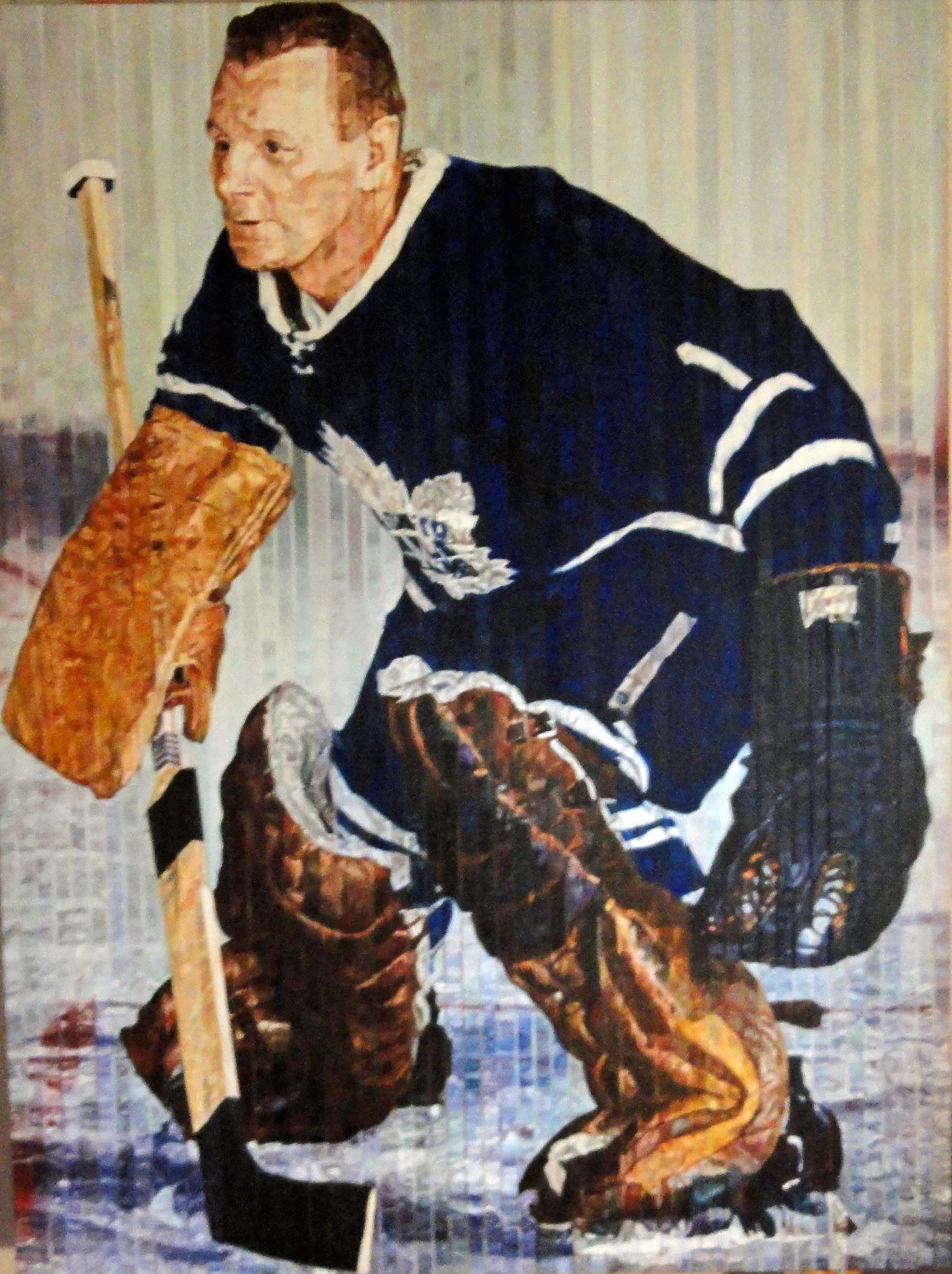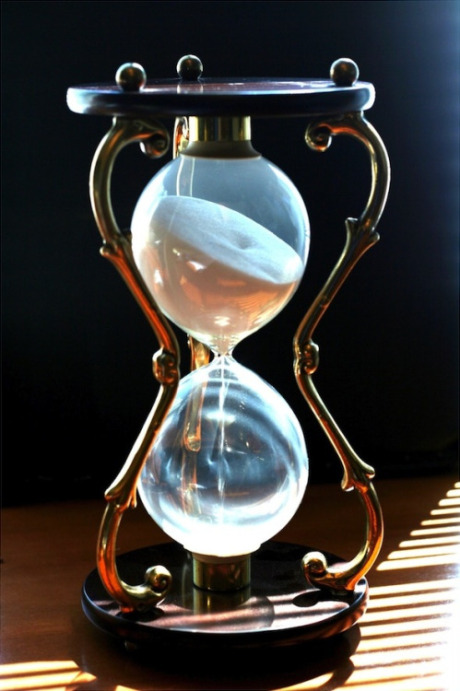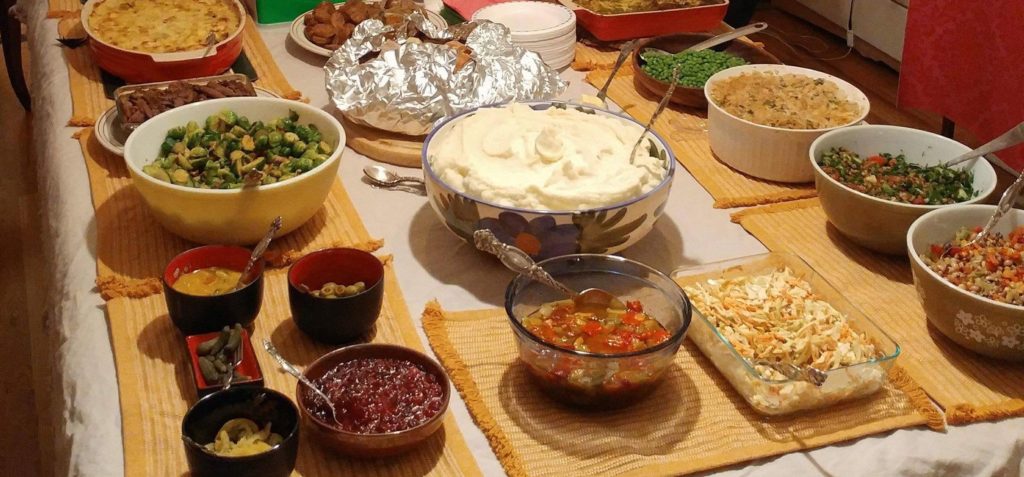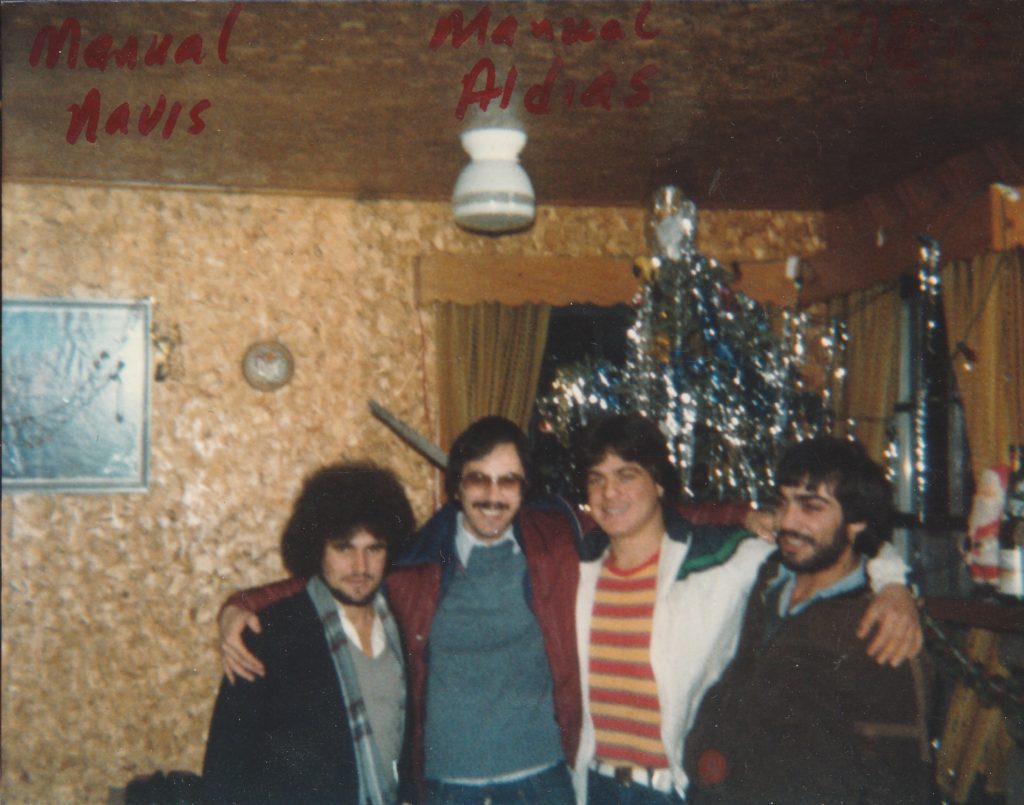Q&A with Bill Rose
BY NQ
January 2019

Johnny Bower
by Bill Rose
1.Can you tell us more about the Johnny Bower piece? And how did you arrange to meet with Mr Bower? What was that like?
In 2011 I found an old hockey card of Johnny Bower. Just seeing the card brought back a whole raft of boyhood memories of playing hockey in the 1960s. The image on the card had a number of interesting elements (textures of the ice, the hockey pads, the goalie stick, Bower’s face). The folds in the maple leaf on the jersey also created some interesting shapes. I always look for images which contain lots of pieces of information so it will keep my interest over the two to three months that it will take to make the painting. I decided to do a painting from the card; bigger than life-size … 6ft x 4 1/2 ft.
In 2012 I found out, through an online story, that Johnny Bower was going to be doing an autograph signing in Toronto. After contacting his agent and setting up a meeting, I brought the painting to Toronto.
The meeting went really well. Johnny seemed very happy to see this large portrait. He talked about the photo that was used for the painting and told me some stories about the goalie pads in the painting, which had been lost years ago. He offered to autograph the back of the painting. He signed it: JOHNNY BOWER HHF #1 (HHF = hockey hall of fame). He said that he would like to see the painting in the Hall of Fame in Toronto. I contacted the Hall but unfortunately they had no funds to purchase it. They wondered whether I would consider donating the painting. Shortly afterwards I sold it to a private collector here in St John’s.
2.You were raised near a military base. Is that partly why you are so influenced by American Pop Art? What about your other influences, like Lucien Freud, how did you encounter them? And how did you come to employ your unusual media – books, coins?
Growing up near the US naval base in Argentia certainly influenced my music. As a teenager I played with bands in a number of clubs on the base. The base had a radio station which we could pick up in my hometown so we got to hear a lot of pop music but also soul and rhythm and blues. We would learn these different styles so we could better entertain the military personnel who would be hearing us.
My pop art influences really come from a couple of sources. Certainly American Andy Warhol was an influence as well as British artists Richard Hamilton and Peter Blake. By the way Peter Blake was responsible for the cover of the Beatles’ Sgt Pepper album. British painter Lucian Freud and the whole YBA [Young British Artist] crowd (Damian Hirst, Tracey Emin et al) are also an influence on my work.
My work is all based on a grid. After many years of employing traditional materials (paint, graphite, ink) I felt the need for a change. I started looking for readily available, same-sized objects that I could use to fill my grids. Pennies seemed an obvious choice. They were certainly easy to come by. One of my early penny pieces was a portrait of Queen Elizabeth. I have also made a portrait of Wm S Burroughs out of over 7,000 Tylenol tablets.
3.You are also a musician – what instrument(s) and genre(s) do you play?
I play guitar. I started playing shortly after seeing The Beatles on The Ed Sullivan Show in February, 1964. I play a number of styles … rock and roll, country, jazz, blues, folk, and rhythm and blues.
4.With your visual art, is there a particular achievement you’re most proud of? And what are you working on now, what’s your next project?
Last summer I had a work of mine exhibited in Venice, Italy, at the Venice Biennale. It was quite a thrill to go to, arguably the biggest visual art show in the world and see my portrait of Leonard Cohen installed there.
I am presently working on a show of new works which are influenced by the lyrics of Leonard Cohen. The show, entitled EVERYBODY KNOWS, will open at the Emma Butler Gallery in May, 2019.



